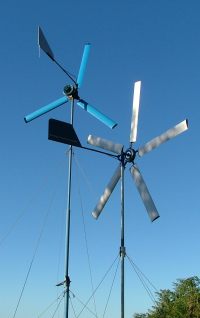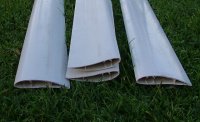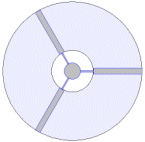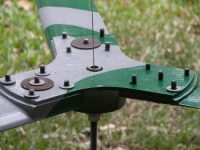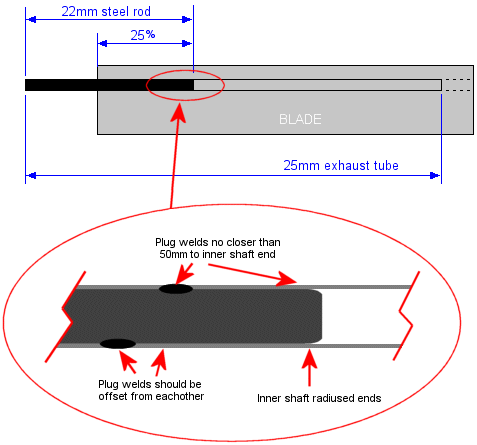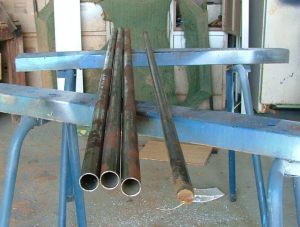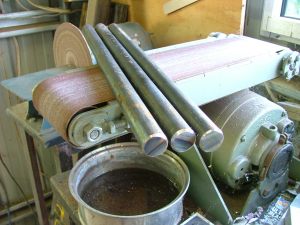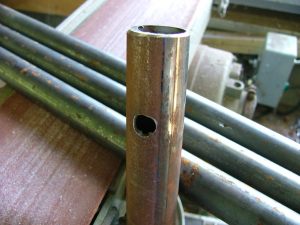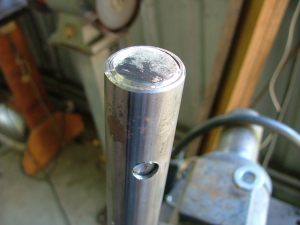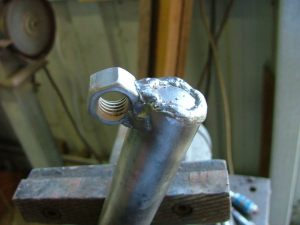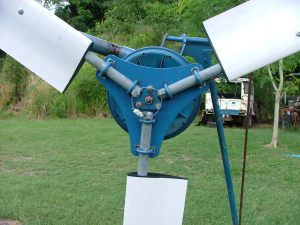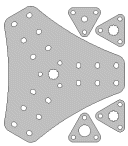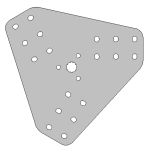 |
|
|
|
Site Navigation
Projects & Information
»General Information»Wind turbine Projects »The F&P Smartdrive »Electronic projects »Microcontroller projects »Miscellaneous Kits & Parts
»Basicly Natural Pty Ltd»PVC & Aluminium blades »Scale model farm windmills »Price Watch Discussion Forums
Handy Links
»Wind»Solar »Electric Vehicles »Electronics »Micro Controllers »General Interrest About TheBackShed Getting Started Privacy Policy
|
Extruded PVC and Aluminium blades take a lot of the hard work out of building a wind turbine. They have a proven aerofoil profile and good finish, all you need to do is mount them on a hub and you have a working turbine. Mounting the blades correctly is important. In the early development days of the extruded blades there were a few failures caused by incorrect mounting techniques. Blades have slid off the mounting rod, or bent back and hit the tower. We've learned from these failures to come up with a mounting scheme that, to date, has not failed. It is highly recommended you use the information below when fitting your extruded blades, taking shortcuts will most likely lead to disaster.
The extruded blades are available in PVC and Aluminium. Both have the same profile, work just as well as eachother, and have a 1 inch hole down the full length of the blade. The hole is positioned at the blades center of lift, and is designed to have a steel tube fitted for strength and mounting. To use these extruded blades, you slide in a length of 25mm( 1inch ) pipe at least 75% the length of the blade. This gives the blade its strength and makes it easy to mount the blade to the hub. You can use common 1inch exhaust tube for this, stainless steel is best. The blade will also need more strength towards the turbines center, where blade loading is at its maximum, so you need to slide a length of 22mm steel rod into the exhaust tube, for at least the first 25% of the blade. The exhaust tube and rod should be plug welded in several places to keep them together. See below. The inner 22mm rod should have a radiused end, and the plug welds should be no closer than 50mm from the inner 22mm rods end, and plug welds should be offset from eachother ( dont plug weld directly opposite another weld ). Do NOT use aluminium tube.
Once in place, the blade extrusion can be pop riveted to the tube. For turbines over 3 meters in diameter, the minimum recommended number of rivets is 8 ( 4 per side ), and for turbines under 3 meters, at least 6 ( 3 per side ) rivets should be used. The rivets should be stainless steel ( not aluminium ), and have a shank ( to suit hole ) of 5mm. The blades work best with a angle off attack between 8o and 10o. The angle is taken from the blades centerline ( 0o ). Note there is a 3.2o difference between the blades centerline and the bottom surface ( the side that faces the wind ). So if you want a 10o angle of attack, rotate the blade to read 13.2o from the bottom surface.
|
||||||||||||||||
